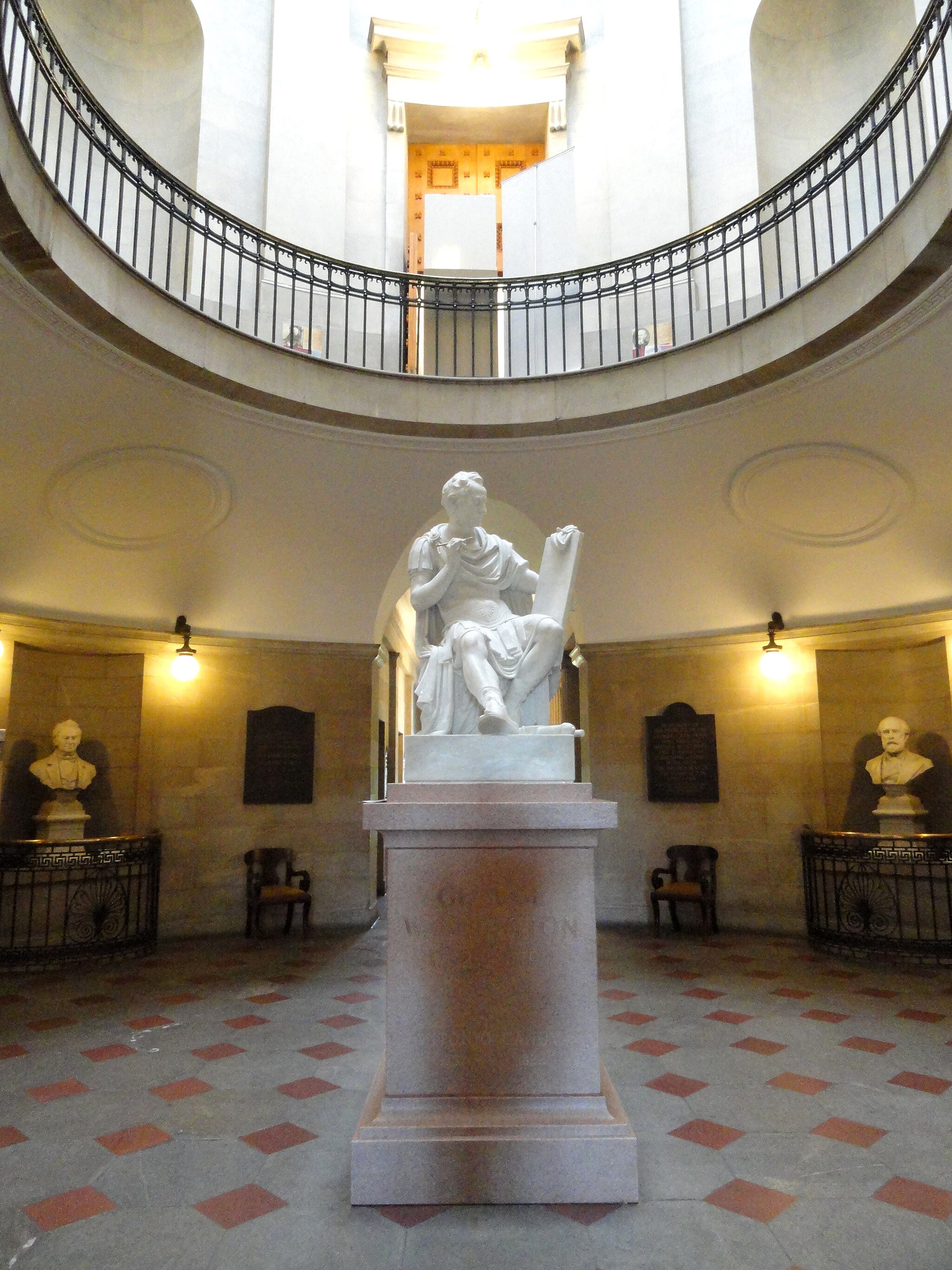Antonio Canova Sculpts George Washington. How did the Italian sculptor approach a portrait of the first US president

"Old Canove of Rome," Thomas Jefferson declared in 1816, when asked who should sculpt a portrait of George Washington for the North Carolina statehouse. And what should Washington be wearing? "The Roman [costume]," Jefferson advised, as "the artist, and every person of taste in Europe" would be for it and the American "boots & regimentals have a very puny effect."
Canova apparently agreed his models in clay and plaster show him experimenting with different types of classical dress. In his first clay sketch, Washington wears a loose toga, his right shoulder bare and his left arm tucked into the cloth.
The plaster model shows the final costume: Washington in ancient armor to reflect his reputation as a general in the American Revolution.
But the inscription on the tablet Washington holds changed. In the plaster model, it reads, in Latin, "Law, Homeland, Liberty." But in the final version it is in Italian: "George Washington / To the People of the United States / 1796 / Friends and Citizens." Canova was quoting from Washington's farewell address, published widely in 1796 after his two terms as president and opening with the words "Friends and fellow-citizens."
Canova's marble George Washington arrived in North Carolina on December 24, 1821, to a grand ceremony and a 24-gun salute. Sadly, a fire in 1831 destroyed the North Carolina statehouse and George Washington with it.
However, a finished model was still preserved in Italy, and in 1970, North Carolina commissioned a marble copy. This 20th-century replacement was also greeted with fanfare and installed in the North Carolina Capitol, where it greets visitors to this day.
Romano Vio, after Antonio Canova, George Washington, 1970, marble, North Carolina State Capitol, Raleigh